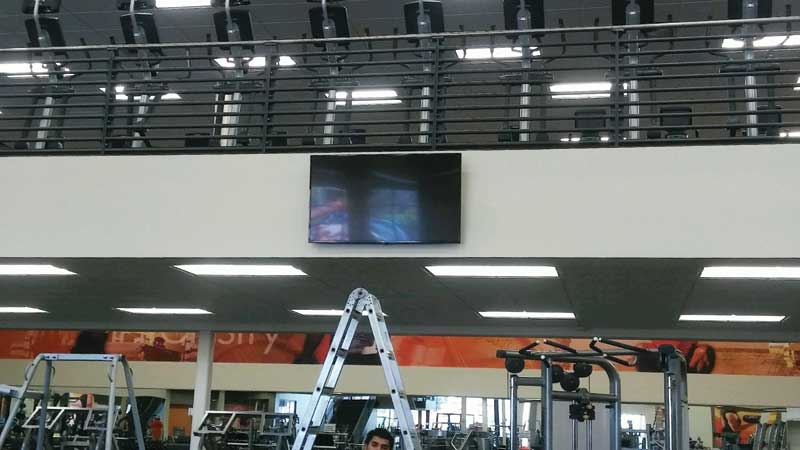
Photos courtesy iTeam
By William Kazman and Paul Gilmartin
Installing digital signage involves the logistics of getting everything in the right place at the right time. Every project starts out with a test of one screen in one location, but many projects fail at this pilot stage because of poor installation development, at which point there is often no patience to move forward. This is especially true when digital signage is driven by marketing interests but without the support of an organization’s information technology (IT) department.
There are many elements involved in deploying, maintaining, servicing and supporting a digital signage network and it is important to understand all of the implications of the medium. Managing risk in a digital signage rollout involves anticipation, planning, clear communications and a well-thought-out process.
Different approaches
There are different ways for digital signage providers to handle rollouts and support. One is to rely on in-house resources. This option ensures direct control and, depending on the situation, may reduce costs. It also carries relatively hefty requirements in terms of skill, reach and timing. Focusing on a complex installation, for example, can easily have a negative impact on other projects.
Another option is to hire a local subcontractor. The expenses may include administrative and management fees, but typically the labour costs are relatively low. Concerns can include a lack of predictability, visibility and quality control.
A third option is to hire a professional digital signage installation company. Direct control is again abandoned, but there are gains in terms of speed, scale, predictable costs and quality, visibility and specialized skills.
Traditional sign shops may already have the customer base for digital signage installations, which gives them a big leg up in the market, but they may find it challenging to provide an effective service offering. The answer to this challenge, generally, is to partner with other companies accordingly.

Ladders, lifts, poles and other hardware may be needed to reach the mounting location.
Surveying the site
While there is a push to diversify digital signage through interactivity, integration with mobile communications and camera-based analytics, the underlying structural realities are the same, no matter the screens. These include mounting hardware for physically holding the screens in place, software for managing content, media players—either built into or connected to the screens—and monitoring systems.
When determining where to install digital signage displays, it is important to consider esthetics, traffic and sightlines. Physical factors to account for may include the locations and rigidity of metal wall studs, the structural integrity of the wall, the thickness of the ceiling and hidden obstructions, whether electrical, plumbing-related or other. Safety will depend on clearance and how securely the screens can be mounted. Displays have become lighter and easier to handle, but they can still be quite fragile during installation.
With these factors in mind, a site survey in advance is always a good idea. The screen size and project budget will help determine which mounting locations are actually possible, not simply desired by the client. There may well be tradeoffs before the final mounting locations are chosen.
There are many installation options for screens, including fixed, tilt, swing, pullout, ceiling, wall, cart, stand, truss and pole mounts. For a wall mount, the site survey should check the material (drywall, cement, metal, wood, brick, stone, tile, etc.) and its structural integrity, along with spacing and alignment with relation to the desired target audience’s location.
Similarly, ceilings can vary widely, including drop ceilings, drywall, wooden beams and concrete. I-beams and bar joists will affect the choice of mounting location, as can the distance between the ceiling and the roof, with regard to the use of ladders, lifts, poles and hardware.





